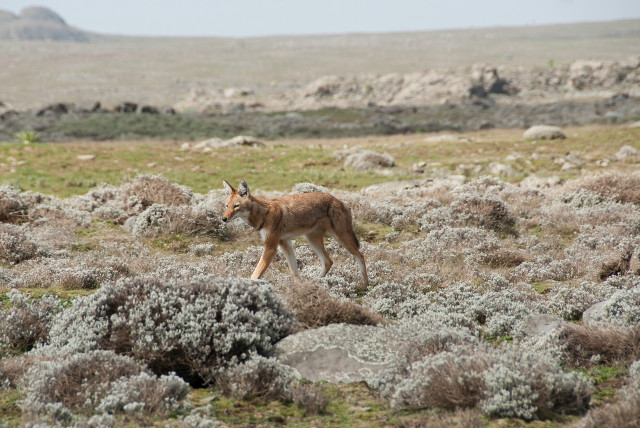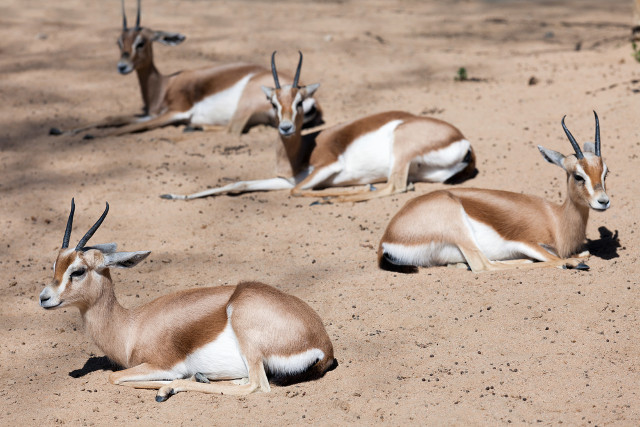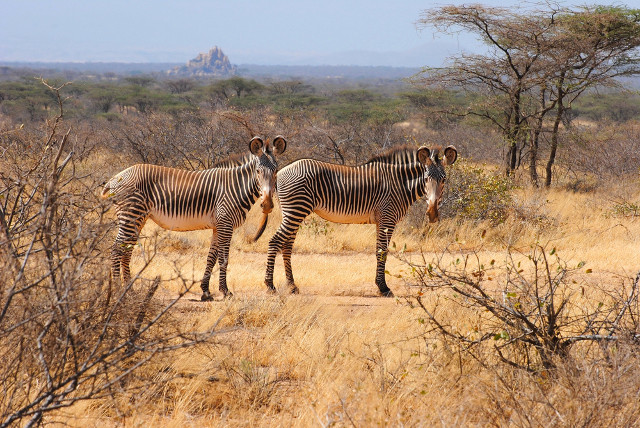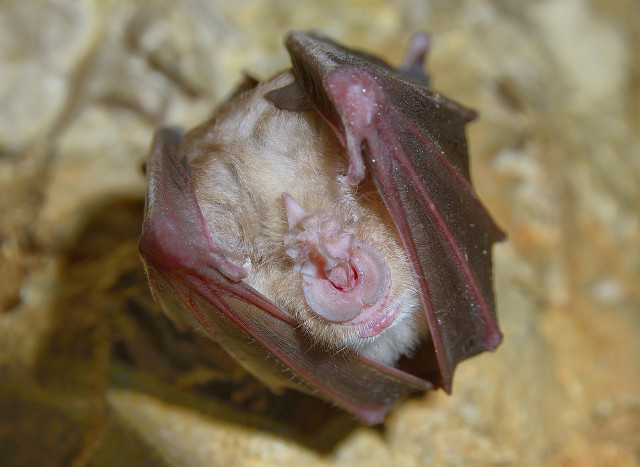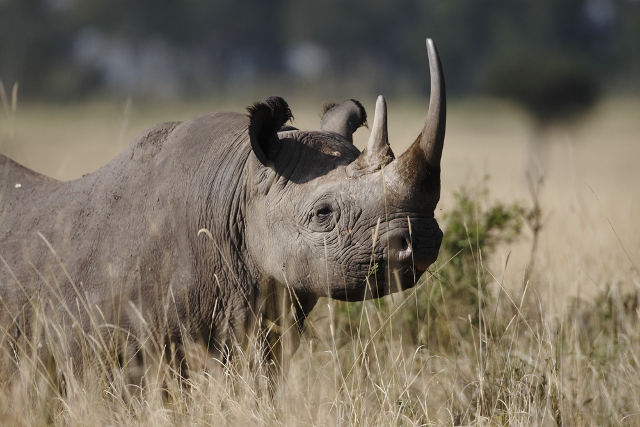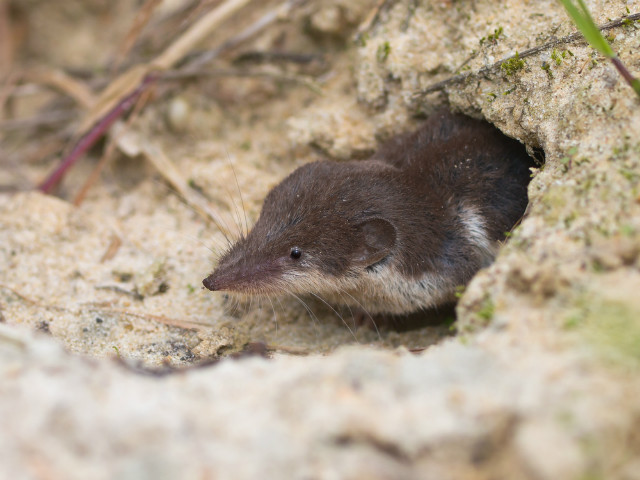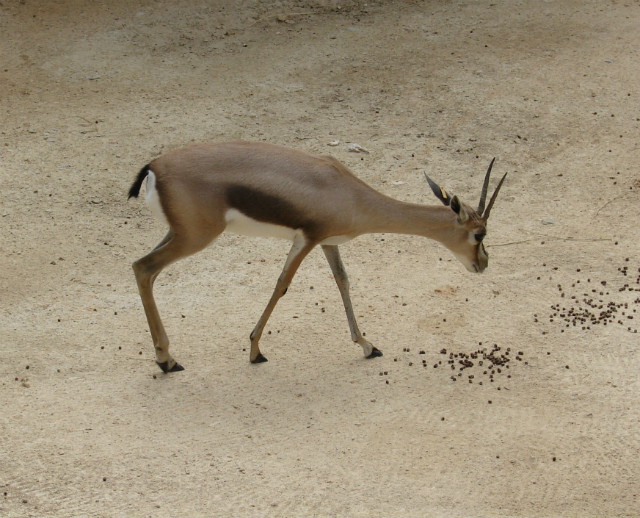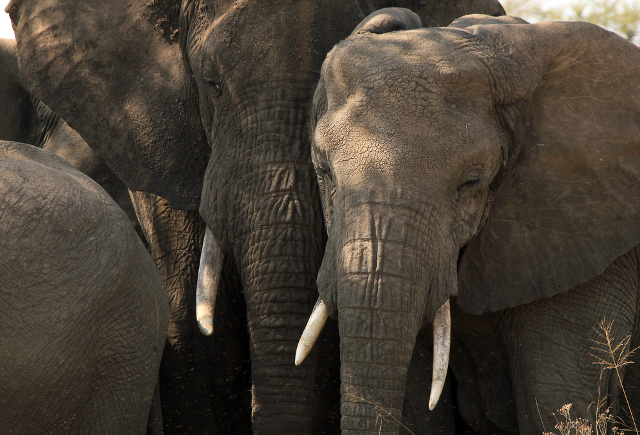Ethiopia occupies a unique position in Africa, both geographically and demographically: it’s located right where the Sahara Desert meets sub-Saharan Africa, and it’s population is growing fast than almost any other in Africa. This population growth, combined with the changing climate, has led to the decline of many of its native animals. Many have been added to the endangered species list in the last few years, including the beloved Grevy’s zebra and the lesser known Lesser Horseshoe Bat (no pun intended). Here is a list of 15 endangered species in Ethiopia that are in need of conservation.
1. Ethiopian Wolf
Living on just a few mountain “islands” above 4,000 meters, this rare wolf endemic to Ethiopia starts off our list. It is the most endangered carnivore in Africa, and the rarest canid in the world. Shifting agriculture and climate change are the main causes for this creature’s low numbers.
2. Nubian Ibex
This horned species primarily lives in the Middle East, but are found all the way down to Ethiopia and nearby Eritrea. Curiously, the animal lives in separate herds made of either males or females. These ibex have impressive horns that curl backwards around their heads and can measure up to a meter in length. They are currently classified as vulnerable.
3. Spotted-Necked Otter
Known for the creamy white blotch around its throat, the spotted-necked otter is primarily found in the southern portion of Ethiopia and other parts of sub-Saharan Africa. As with most otters, it tends to congregate around rivers, but is noticeably missing from many rivers in East Africa. The hunting of the animal for bushmeat, along with pollution of the water systems, has regrettably lowered their numbers.
4. Patrizi’s Trident Leaf Nosed Bat
Bearing a unique fleshy nose, big hairless ears, and beady eyes, this bat usually stays in large groups of its cohorts. It thrives across the Middle East and Maghreb regions, but is found as far south as Ethiopia. Their status has gone back and forth from “vulnerable” to “least concern” on the IUCN’s Red List. Fortunately, the bat is currently in “least concern” status for now, but numbers in Ethiopia are low compared to other countries.
5. Dorcas Gazelle
Also known as the Ariel gazelle, the dorcas gazelle can live its entire life without drinking water; it gets all the moisture it needs from grazing on plants. The animal is currently on the vulnerable list, with a total of 35,000-40,000 left in the wild. A subspecies called the Saudi gazelle is now currently extinct, so this one needs to be watched closely. Like many other endangered animals, the dorcas gazelle’s biggest threat is from human civilization, not natural predators.
6. Grevy’s Zebra
This hefty zebra, also known as the imperial zebra, is both the largest and most endangered of species of zebra that lives in Africa. Already declining in the 1970s when their numbers stood at 15,000, their population is now down to approximately 2,000. While they once lived throughout East Africa, they are now primarily limited to only southern Ethiopia and northern Kenya.
7. Cheetah
Cheetahs are found throughout a large portion of sub-Saharan Africa, including Ethiopia, but just because they cover a large range doesn’t make them any less endangered. Their widely known claim to fame is being the fastest land animal in the world, and this recognition has given the animal a slight advantage in terms of conservation efforts.
8. Lesser Horseshoe Bat
The second bat on our list has recently moved up to least concerned from a previous vulnerable listing. That doesn’t mean they couldn’t get back into the threatened category though, as they are very rare in across Africa except in parts of the coastal Maghreb.
9. African Wild Ass
Once covering a robust range all the way north to Egypt, this species currently only lives in the Horn of Africa area of Ethiopia, as well as neighboring Eritrea and Somalia. This rare member of the horse family is now critically endangered, and less than 600 specimens still exist the wild. Domestication and hunting for food has continued to bring its numbers down.
10. Mountain Nyala
Sometimes known as the balbok, this member of the antelope family lives in a small part of central Ethiopia south of the Rift Valley. It used to thrive in a much larger area of Africa, but its numbers have declined due to hunting and habitat encroachment by humans. Unfortunately, there are only 2,500 of them known to be in existence, and they are currently categorized as endangered.
11. Black Rhinoceros
Black rhinos are critically endangered not just in Ethiopia, but throughout the African continent. While they are referred to as “black,” these creatures actually come in colors varying from gray to brown. One subspecies, the western black rhinoceros, was already declared extinct in 2011, so protecting the ones that are left is critical.
12. Guramba Shrew
One of the tiniest endangered animals on our list is the Guramba Shrew. These cute animals make their home in tropical dry forests and are endemic to Ethiopia. They don’t have a big population range, and are only known to be found in the riverine forest bordering the Collufu and Sermale Rivers located at the base of Mount Guramba.
13. Lion
Lions are a rare sight in Ethiopia these days — except for those kept in captivity at the Addis Ababa zoo. That being said, there are still a few in the wild, mostly located in the Kafa biosphere. These lions are one of the very few species in Africa that doesn’t live in a savanna region.
14. Specke’s Gazelle
Named after John Hanning Speke, an English explorer in central Africa, this species is the smallest of the gazelle family. The population is currently confined to the Horn of Africa and it has seen such severe habitat fragmentation that it’s impossible to figure out its natural migratory patterns.
15. African Elephant
Holding down the bottom of our list is the African elephant. Though commonly thought to be found all over Africa, this massive creature’s habitat is being destroyed little by little every day, and it is now considered endangered. The combination of habitat loss and the large-scale ivory trade has cut its numbers by hundreds of thousands in just a few decades.
Related content on AFKTravel:
A Guide to Hiking Ethiopia’s Simien Mountains
8 Things You Probably Didn’t Know About Ethiopia
Castles, Churches, Tombs and Other Treasures of Ethiopia
Want to discover the finer side of Africa? Sign up for our weekly newsletter.

